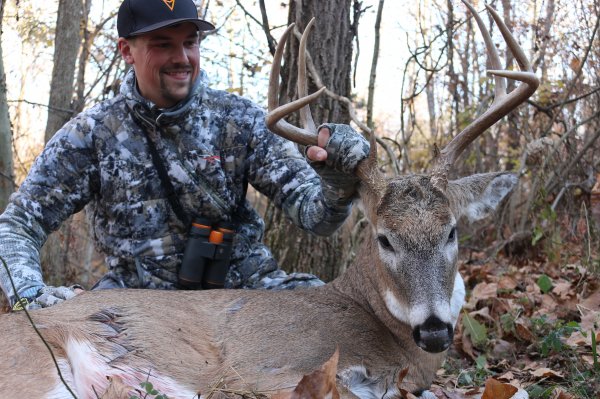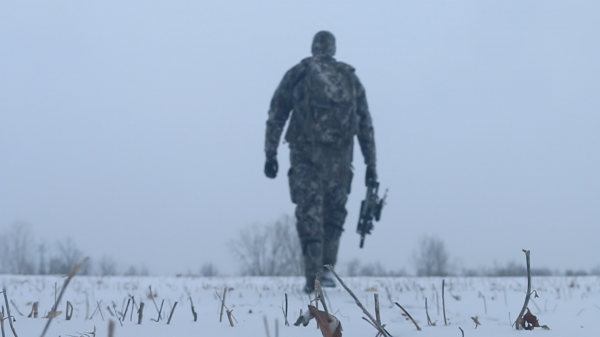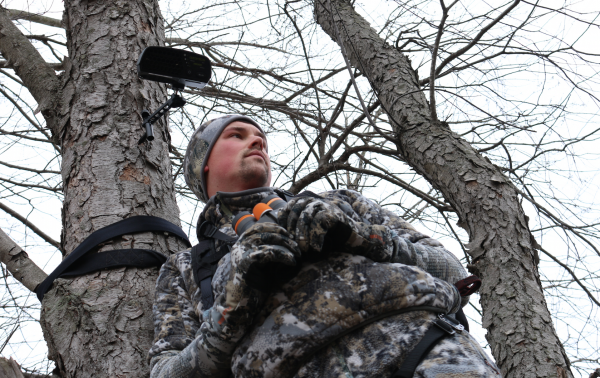
I head into every new hunting season, year in and year out, with one goal that’s always the same. Be a better hunter this year than I was last.
Fortunately for me, as the host of a deer hunting podcast, I get to chat with dozens of amazing hunters each year and have nearly infinite opportunities to learn and improve my deer hunting game through the lessons learned during these conversations. If a fellow hunter wanted, they could go through our past 150 episodes (300+ hours of content) and digest much of that same deer hunting wisdom (click here to see our podcast archives).
But who’s really got time for all that right now? Today – for those of you in a hurry – I thought I’d share 12 super simple and quick tips that I’ve picked up over my years hunting and interviewing the “pros.” These are just some starter ideas that are on the top of my mind, so if you’re ready to take things to the next level, I’ve linked some suggested in-depth interviews to check out as well. Try picking one or two of these ideas to improve on this year, do the work leading up to or during the season, and reap the rewards.
Here goes …
1. Silence – serious silence – is crucial. Put hockey tape or dark colored duct tape on your portable tree-stand and climbing sticks, covering as much of the exposed metal edges and contact points as you can. The goal here is to reduce the chances of any metal on metal noises when setting up or traveling back and forth in the woods with your stand/sticks on your back. If you’re going to be a mobile hunter, this is mandatory. And while we’re talking about stand tweaks, do your best to reduce tree stand noise on more permanent set-ups too. If necessary loosen or tighten straps on ladders/sticks/stands to limit creaking, grease noisy joints and remove anything that jiggles, bangs or clangs.
2. Be smart with your calling strategy. Don’t get too gung-ho with the grunt tube in areas where there’s lots of hunting pressure and/or not many mature bucks. And if you call to a buck and he picks up his head and looks in your direction, DO NOT call again while his head is up and looking or walking your way. Let him come. (I got some great calling advice from Mark Drury and John O’Dell in one of our early episodes of the 100% Wild Podcast)
3. A great stand location isn’t worth much if you’re going to get spotted by every deer passing through. Prioritize cover. If you have a tree stand location that’s in a great spot, but lacking that quality cover – use big zip-ties or rope to attach leafy summer branches or fake christmas tree limbs around your stand. If you can’t do that, you’ll want to set your stand as high as possible, to hopefully avoid being in the line of sight of any deer.
4. If you have a favorite treestand that is almost always great during the rut, make a promise to yourself this year to leave it completely alone until primetime. Then, sneak in there during the rut, ideally on a day with good weather conditions, and hunt it for the first time. Hunting good stands on bad days is a common rookie mistake. Don’t make it. Get your timing right, because that first sit or two is always the best. (For more on predicting good deer movement and properly timing your hunts, listen to this interview with author/blogger/habitat consultant Jeff Sturgis)
5. Make a point this year to do a better job with your evening exits out of your hunting property. Don’t get lazy and walk across crop fields or near food plots, spooking all sorts of deer. Even after dark, that kind of pressure on deer will change their behavior in a way that’s going to hurt your hunting.
6. Try getting to your tree-stand just 20 minutes earlier for morning sits this year. If you’re walking in to your stand at or just before daylight, you’re moving through your property when most deer are on their feet too. Get in there and settled well before deer start filtering back through towards their bedding areas. In a perfect world, try being in the stand at least an hour before daylight. (The importance of early entry was really impressed on me by Michigan hunter John Eberhart, listen to his VERY helpful interview here)
7. Start keeping record of every mature buck encounter you have, when it was, where he came from, where he went to, what the weather and wind was, etc. As you build out this data set, look for trends. If you don’t keep track of all of this stuff, it’s unlikely you’ll ever be able to notice the bigger picture patterns. So start tracking and then use these trends to aid in decisions down the road. The same goes for trailcam photos of mature bucks – study these and look at all of the correlated weather/moon/etc conditions – especially photos from past years. Similar trends will likely reoccur year after year. (Our podcast with Steve Bartylla about patterning mature bucks expands on this in a big way, Mark Drury also does a great job discussing how to pattern with trailcam pics.)
8. Crank up your scent control game just a little more – we can all do better. Don’t cut corners or get lazy this year. Take those scent free showers every day. Don’t wear your camo in the truck and keep that gear consistently washed. We all know the drill, but not all of us actually stick to it. This year, make it happen. And speaking of scent – the same goes for playing the wind. You simply can’t afford to hunt a stand if the wind is going to be blowing your scent right to likely areas of high deer activity. If the wind switches to this kind of situation, move.
9. Work in the off-season to identify buck and doe bedding areas – don’t just guess – really get in there and figure out exactly where those spots are. Bedding areas are the hubs of the wheel on your hunting property – all deer movement expands out from there. Once you find these spots, mark them on maps and then use this insight carefully. For example, during late mid-late October, hunting close to those buck beds (in between the bed and food) can be one of your best bets. On the other hand, in the rut you can forget about those buck beds and instead focus on doe bedding areas – get downwind of them and wait for cruising bucks. (Few people have helped me more with understanding bedding areas than “The Big Buck Serial Killer” – Dan Infalt. His two interviews are must listens. Part 1 and Part 2)
10. Observe as much as possible before striking. Scouting from long-range, if possible, is a great way to fine-tune a hunting strategy before pushing into your good areas and educating deer. Find a hill or a tree that you can get to without entering the core of your property and spend mornings or evenings observing as much of your property as you can. When you see the activity you’re looking for, dive in for the hunt.
11. Plan for the shot before it happens. Every time you get into the stand or blind, take a few minutes to imagine a successful hunt. Think through how you’ll move into position if a deer comes from the left or the right or behind you. Practice pulling up your gun or drawing back your bow from different angles and make sure there is nothing obstructing that process.
12. Finally, for the real secret to deer hunting success – read this.






